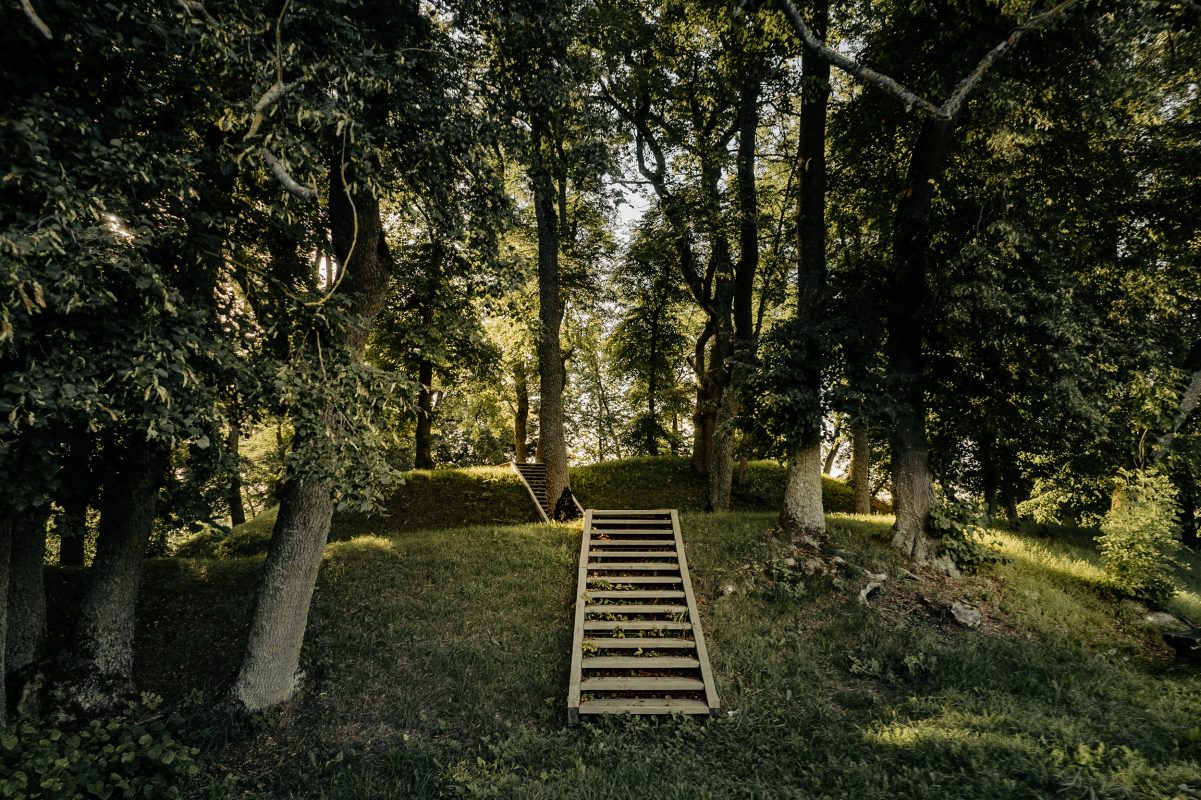Ąžuolpamūšė Hillfort

55

0

0
This historically significant hillfort, located at the confluence of the Tatula and Ūgė rivers, is a unique archaeological site dating back to the 9th-11th centuries. The hillfort, once the site of a Semigallian wooden castle, features a triangular platform surrounded by remnants of defensive ramparts. The nearly vertical slopes, affected by landslides, testify to the intense human activity and defensive importance in Northern Lithuania. Archaeological excavations have revealed stone ovens, sand floors, and a stone-paved courtyard. Although 13th-century sources no longer mention the Ąžuolpamūšė Hillfort, the presence of a cemetery indicates that life continued here until the Semigallian conquest by the German Order.
Info
-

Mounds
-

 Entertainment
Entertainment
 Food establishments
Food establishments





























 56.123389, 24.459778
56.123389, 24.459778
 Get directions
Get directions









